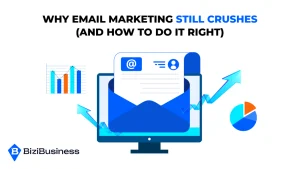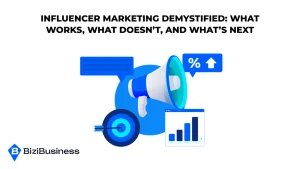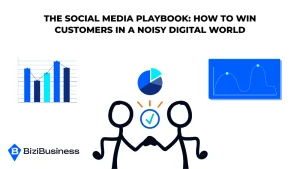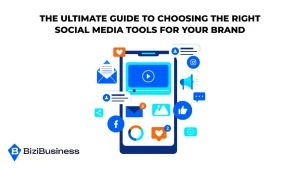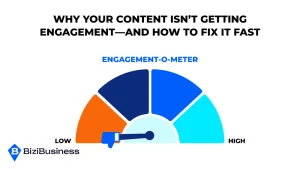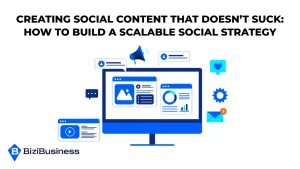BiziTopics
Social Advertising That Sells: Campaigns That Don’t Get Ignored
BiziBusiness
Aug 12, 2025
8 min read
Most social advertising don’t fail after launch—they fail the second someone scrolls past them.
Users are hit with hundreds of ads daily, and unless your creative earns attention in the first few seconds, it’s invisible. This is ad blindness, and it’s killing your ROI.
It’s not about spending more. It’s about standing out. If your ad looks like every other sponsored post, it’s gone before it even has a chance.
To win, your ad needs to feel native, spark curiosity, and instantly connect with what your audience actually cares about.
Most Social Advertising Fail Before They Even Launch
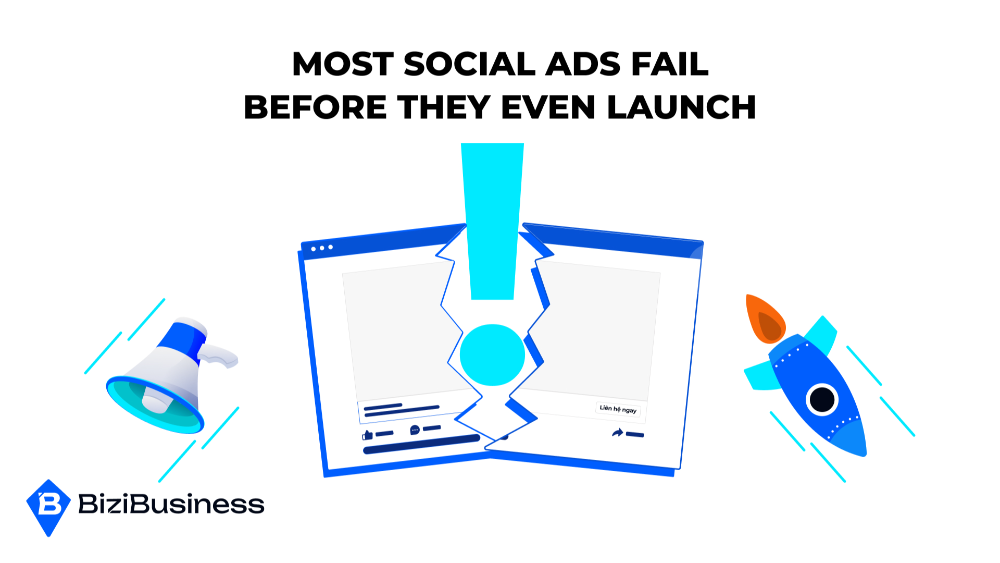
Poor performance usually isn’t a budget problem—it’s a strategy problem. Many ads are doomed before they hit publish because they skip the essentials.
Misaligned Messaging
The message doesn’t match where the audience is in their journey. Pitching the product too soon, using the wrong tone, or focusing on features over benefits leads to instant disconnect.
Wrong Targeting
Even the best creative won’t work if it’s shown to the wrong people. Vague audiences, over-segmentation, or ignoring intent signals are all expensive mistakes.
Generic Creative = Zero Results
Stock visuals, templated copy, and weak hooks get ignored. If it looks like an ad, sounds like an ad, and feels like an ad—most people scroll right past.
Successful campaigns are built on insight, not guesswork. Nail the message, aim it at the right people, and deliver it in a way that grabs attention. That’s the difference between spend and scale.
The Three Pillars Of Social Ad Success
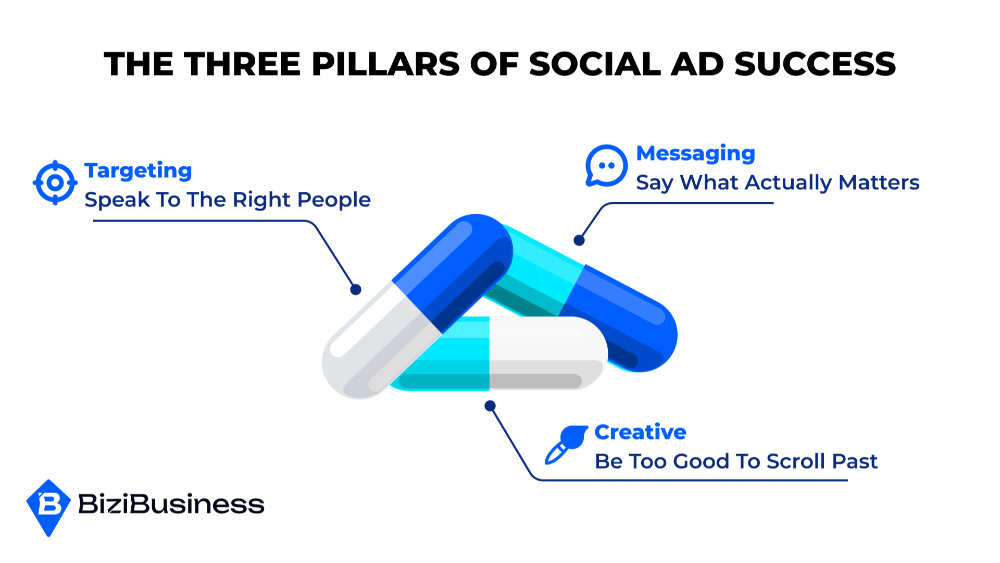
Before you spend a dollar on paid social media platforms, your foundation needs to be solid. Great ads aren’t about flashy design or witty copy alone—they’re the product of alignment between audience, message, and creative. These are the three pillars every high-performing campaign stands on:
1. Targeting: Speak to the Right People
Even the most compelling ad fails if it’s served to the wrong audience.
Effective targeting goes beyond basic demographics. You need to understand:
- What your audience cares about
- Where they are in the buyer journey (cold, warm, ready)
- What pain points, aspirations, or experiences shape their decisions
Many campaigns underperform not because the offer is bad—but because it’s shown to people who don’t care yet.
The fix? Use audience data, test different segments, and match your message to the level of awareness.
2. Messaging: Say What Actually Matters
Forget clever. Focus on clear.
Your copy should speak directly to a core problem or goal your audience has. It should make them say: “That’s me.” When your ad reflects the exact conversation they’re already having in their head, it earns attention.
Good messaging:
- Prioritizes benefits over features
- Focuses on outcomes, not just offers
- Uses language that feels native to the platform (conversational, quick, punchy)
If your message feels vague, self-centered, or overly salesy—it’ll get ignored.
3. Creative: Be Too Good to Scroll Past
Great creative doesn’t just look good—it gets results. Whether it’s a video, carousel, or static image, the goal is to stop the scroll and pull the viewer into the story.
Here’s what works:
- Hooks in the first 2 seconds (on-screen text or first line of copy)
- Bold visuals that feel native, not stock
- Clear contrast between the problem and your solution
- Consistent branding that doesn’t overpower the message
Remember, effective engagement strategies recognize that people don’t engage with advertising. They engage with content that solves a problem, entertains, or makes them feel seen.
When these three pillars—targeting, messaging, and creative—work in sync, your ads start converting faster and cheaper. It’s not about guesswork. It’s about alignment.
Creating Advertising That Stop The Scroll
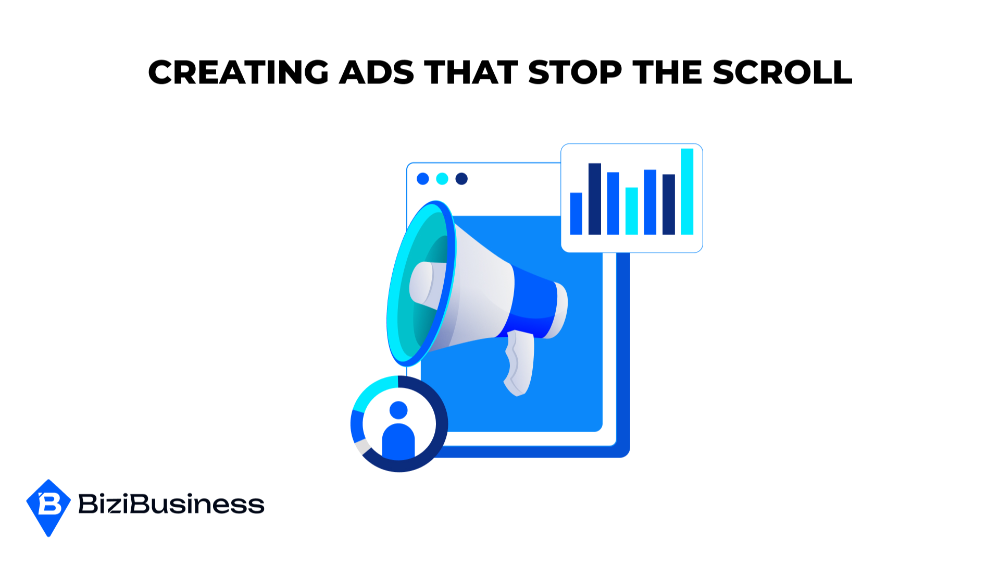
You’ve got just seconds to earn someone’s attention—if that. On social, your ad is competing with personal updates, viral content, and a never-ending flood of dopamine triggers. So how do you stand out?
You don’t just create an ad. You craft a moment that grabs attention and makes someone pause.
Lead With the Hook
The first 2 seconds are everything. Whether it’s a bold statement, a question, or an unexpected visual, your hook should trigger curiosity or emotional resonance.
Great hooks do one of three things:
- Call out a pain point (“Still wasting money on ads that don’t convert?”)
- Highlight a benefit (“Turn $10 into $100 with this ad formula.”)
- Create curiosity (“We spent $500 on this campaign. Here’s what happened.”)
This isn’t the time to be subtle. Get to the point—fast.
Emotional Relevance Wins
People don’t take action because your product is amazing—they act because you’ve tapped into something they care about.
Use emotional storytelling, real language, and tone that matches your brand. The more it feels like something their friend would share, the better.
Want to sell? Make them feel first.
Design That Doesn’t Scream “Ad”
High-performing ads blend in visually with the feed while standing out with message. Use contrast, movement (in video or carousel), and clear, legible copy. Avoid over-styled visuals that scream “corporate”—they’re easy to ignore.
Use subtitles for video. Use arrows, highlights, and bold framing in carousels. Design should guide the eye, not just decorate the screen.
A successful scroll-stopping ad combines clarity, boldness, and emotional pull—and it delivers that instantly.
Top Performing Formats (And Where To Use Them)
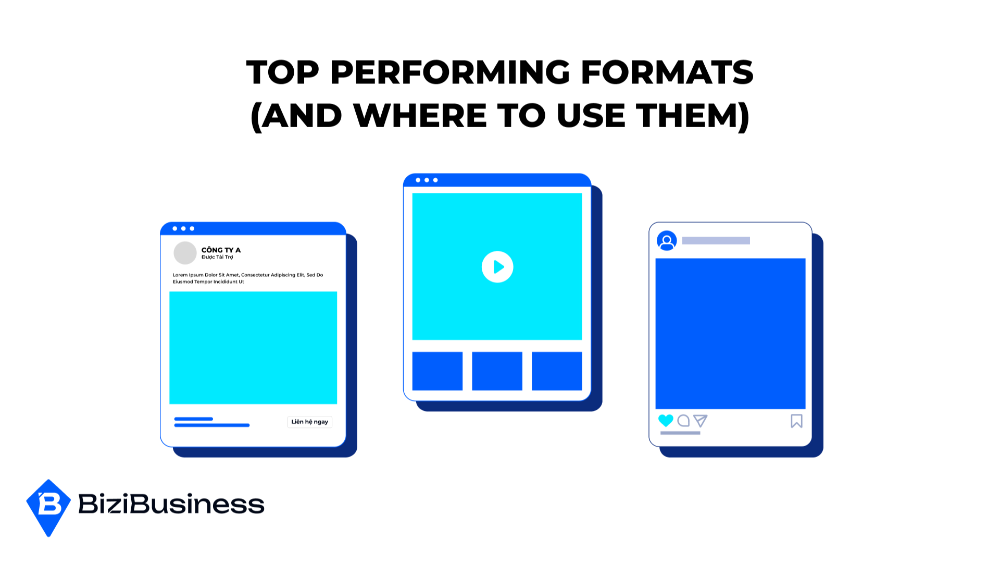
In influencer marketing, the best creative falls flat if you use the wrong format for the platform or your audience’s buying stage. Each format has its unique strengths, and when used strategically, they can dramatically improve performance and ROI.
Let’s break down which formats work, where to use them, and how to align them with your ad objectives.
Stories: Native, Fast, and Personal
Stories (on Instagram, Facebook, and now LinkedIn) are full-screen, mobile-first, and built for immediacy. They’re immersive and often consumed with sound off, which means your message needs to be clear visually and fast.
Why they work:
- They feel less like ads and more like organic content
- They create urgency with built-in time sensitivity (24 hours)
- They’re highly effective for limited-time offers and product demos
Best for:
- Warm audiences who already know you
- Flash sales, countdowns, and quick-hit offers
- UGC-style advertising and “behind the scenes” content
Tip: Always include a clear CTA like “Swipe Up” or “Tap Here.” Use movement and overlays to hold attention.
Feed Posts: Carousels & Static Images
Feed ads are where most brands spend their budget—and most get it wrong by using dull, overly polished graphics.
Carousels let you tell a story over multiple slides:
- Step-by-step how-to
- Before/after transformations
- Breaking down a value prop or feature
Static image ads are best when you have one bold message that can land in a second.
Best for:
- Cold or mid-funnel education
- Lead gen, product explanation, value breakdowns
- Retargeting with a story format
Tip: Use the first slide of a carousel as a headline to hook readers. Make it a reason to swipe.
Reels, Shorts, and TikToks: The Scroll-Stoppers
Short-form video is dominating the feed—and for good reason. These formats are native, addictive, and still underpriced for the reach you get.
Why they convert:
- People prefer authentic, less-polished content
- The algorithm pushes engaging video further
- They’re perfect for storytelling or showing quick transformations
Best for:
- Top-of-funnel brand awareness
- Product demonstrations or founder insights
- Engaging cold audiences with value + personality
Tip: Use analytics and metrics to find out what really hooks your audience. Then, create content that grabs their attention in the first 2 seconds using on-screen text, strong emotion, or an intriguing question.
LinkedIn Advertising: B2B Power Plays
LinkedIn excels for B2B, but the ad creative that works here is different. Flashy doesn’t work—credibility, clarity, and value do.
Best formats:
- Single image ads with a lead magnet CTA
- Thought-leader video clips or explainer snippets
- Document-style carousels that feel like mini-PDFs
Best for:
- Lead gen with gated content (checklists, reports, playbooks)
- Webinar and event promotion
- Retargeting warm prospects with value content creation
Tip: Match the tone of LinkedIn—professional, clear, and purpose-driven. Soft CTAs (like “Read the full report”) often outperform hard pitches.
Conclusion
Social advertising doesn’t have to feel like guesswork—or a money pit. When you build campaigns on a solid foundation of targeting, messaging, and creative, then test and optimize with intent, you create results that are not only measurable… but scalable.
Forget the “spray and pray” approach. The brands winning in paid social media tools today are strategic, data-informed, and ruthlessly focused on what works. They know their audience. They deliver value fast. And they never stop testing.
Whether you’re launching your first campaign or trying to unlock better performance, it all comes down to this:
- Clarity beats clever.
- Relevance beats reach.
- Consistency beats one-hit wonders.
Subscribe to Newsletter
Unlock your creativity and stay up to date on marketing tips
